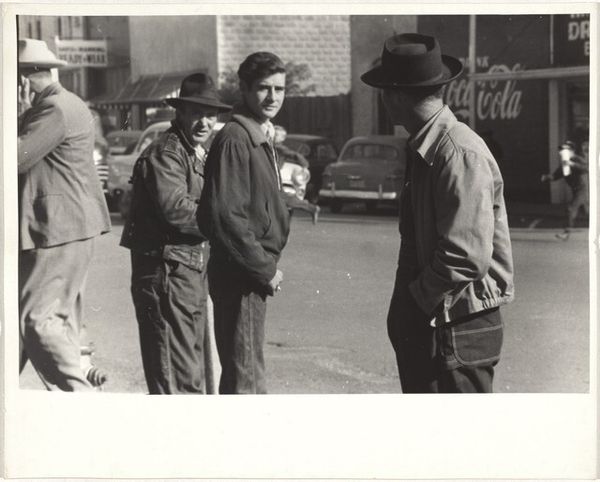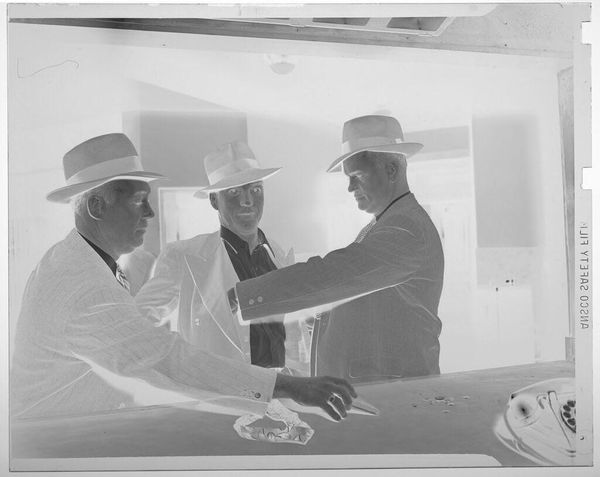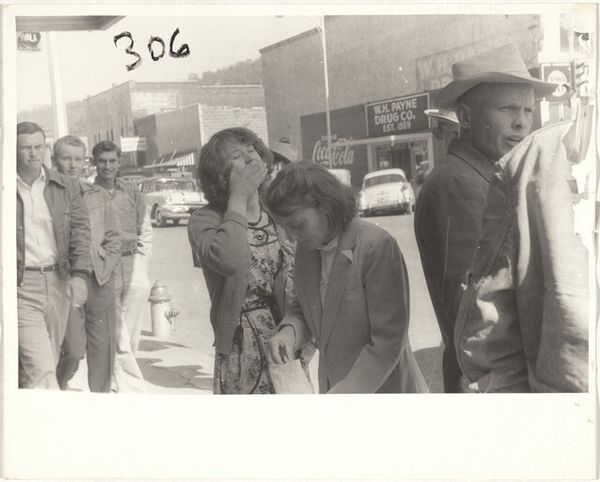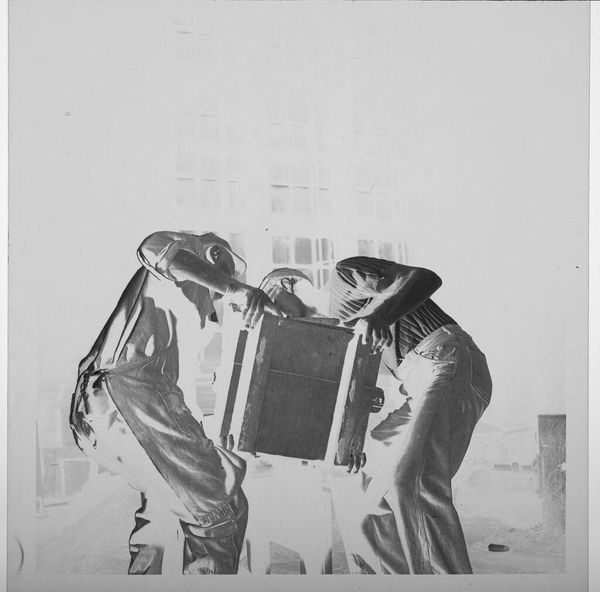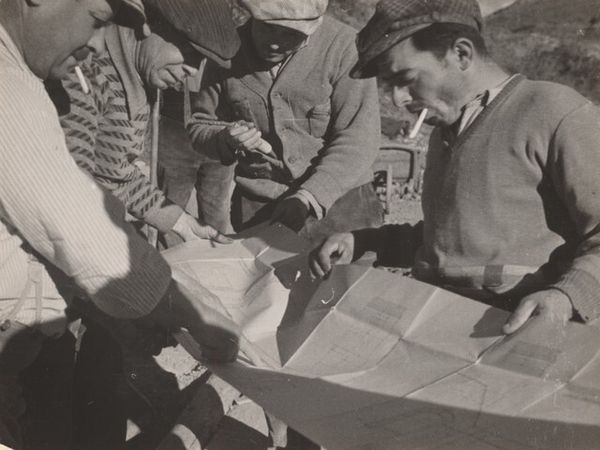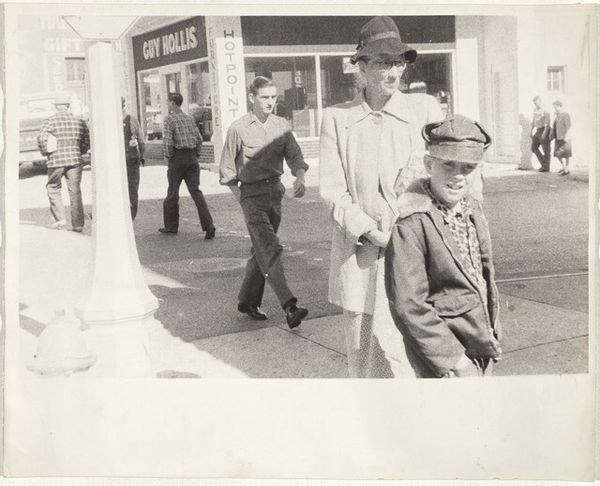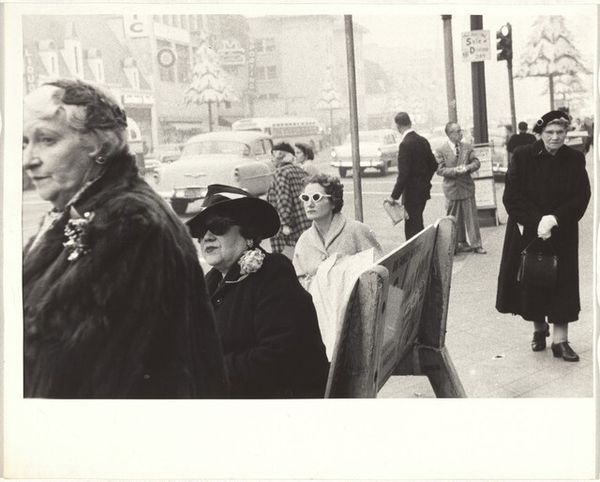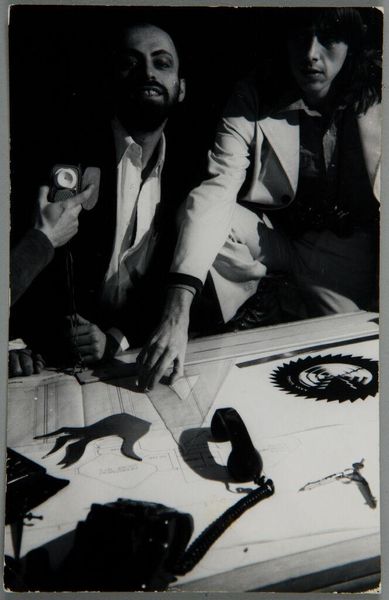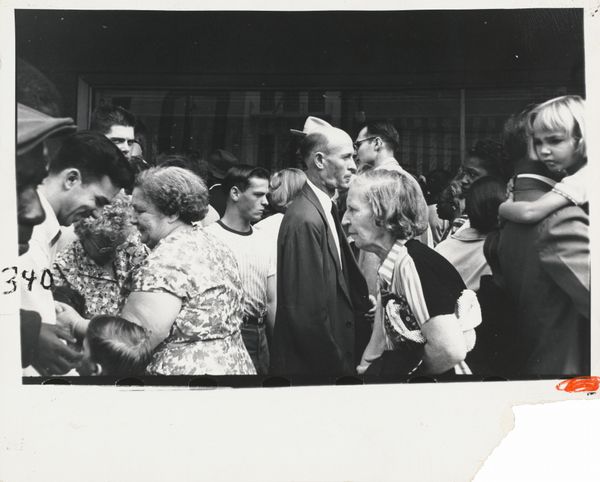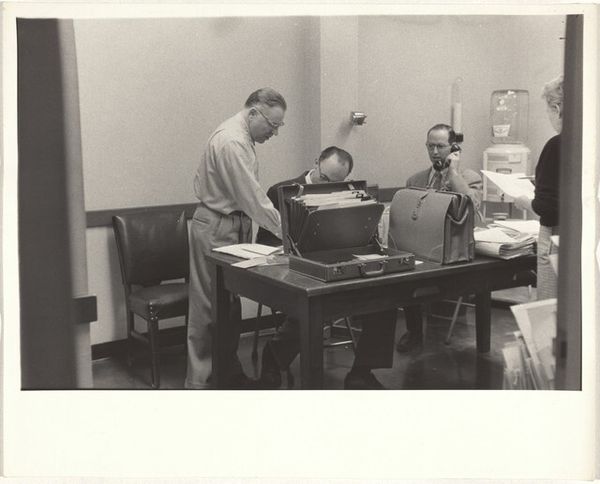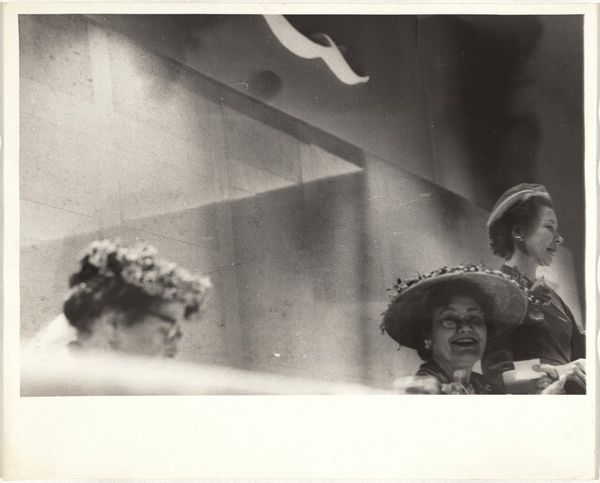
print, photography, gelatin-silver-print
#
portrait
#
print photography
#
photo restoration
# print
#
archive photography
#
street-photography
#
photography
#
gelatin-silver-print
#
modernism
#
realism
Dimensions: sheet: 20.3 x 25.3 cm (8 x 9 15/16 in.)
Copyright: National Gallery of Art: CC0 1.0
Curator: This is Robert Frank's "Three Men Talking--Alabama," a gelatin silver print from 1955. What catches your eye here? Editor: The way they're huddled together. Like they're sharing a secret or plotting something. I can almost hear the low murmur of their conversation, you know? And the fella in overalls—he's almost a wall, shielding them. Curator: Right. The overalls suggest a certain class dynamic, doesn't it? We can situate this image within the larger sociopolitical context of the American South during the mid-1950s. Segregation, economic disparities, the unspoken rules of race and class... Editor: Yeah, it's there, hanging heavy. The one with the cigarette... He looks troubled. And the other one has a wary look, like he knows more than he’s letting on. This whole picture has a kind of anxious feeling for me. Curator: The photo's realism serves as a powerful commentary. Frank, as an outsider, captured these ordinary moments, revealing layers of complexity about American identity. It forces us to confront uncomfortable truths about power, marginalization, and the nuances of everyday life within a racially segregated society. Editor: I love the starkness of the print, how everything is this dance between light and shadow. The rough grain…it all adds to that tense atmosphere. You can smell the exhaust fumes, the heat… It’s a real slice of life, rough edges and all. Curator: Exactly. By challenging the romanticized narratives of American exceptionalism that dominated mainstream media, Frank made people see a very different nation, particularly in the context of race and inequality. He compels us to engage in critical dialogues surrounding identity, social justice, and the ethics of representation. Editor: It’s stuck with me. It's like looking at a memory, faded but intense. Sort of like finding a forgotten photograph in your grandma's attic. Curator: And hopefully it pushes us to critically examine how those "forgotten" or obscured histories continue to shape our present.
Comments
No comments
Be the first to comment and join the conversation on the ultimate creative platform.
